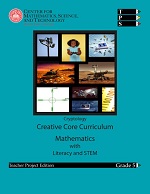Fifth Grade Mathematics

Operations and Algebraic Thinking
Cryptology
Students use various functions to decode, and later encode secret messages. They graph the functions to help determine patterns.
Numbers of Operations in Base Ten
Engines
Students build an engine using a toilet paper tube for a cylinder and a ping pong ball for the piston. They measure various parts of the engine and perform a variety of calculations to determine displacement and horsepower.
Numbers and Operations - Fractions
Playground Design
Teams of students each design a playground for a specific age group of students. Each playground will be scaled to the average size of the children of that age. Scale drawings will be made that indicate full size dimensions. Eventually a scale model will be built. These models can be placed together to make a playground that will appeal to a large range of ages and sizes of children. Throughout this process, students will get extensive experience working with fractions.
Measurement and Data
M-Class Hydro Racing
Racing teams design, build, and race a rubber band powered hydroplane boat. The motor consists of two rubber bands in a 20 cm long plastic tube with a propeller on the back end taped to the bottom of a hull. The pitch of the propeller is determined and the theoretical power of the motor is calculated. Students calculate wetted surface area of the proposed boats and graph the results to help them select the fastest boat. They then calculate displacement and various ratios. Eventually the boats are raced in a tank, pool, or small pond.
Geometry
Planetary Exploration
Students use large grid paper to represent the surface of an alien planet. They draw various geometric shapes in each quadrant and determine locations and areas of each. They then tie for strings to a magnet, labeled for positive and negative for each axis, and pull it under the paper. They make a small “rover” with a metal bottom that can move around the grid, exploring the surface. Routes are determined through coordinate pairs. Written instructions are shared with other groups and compared with the original. Errors in coordinate pairs are identified and corrected.